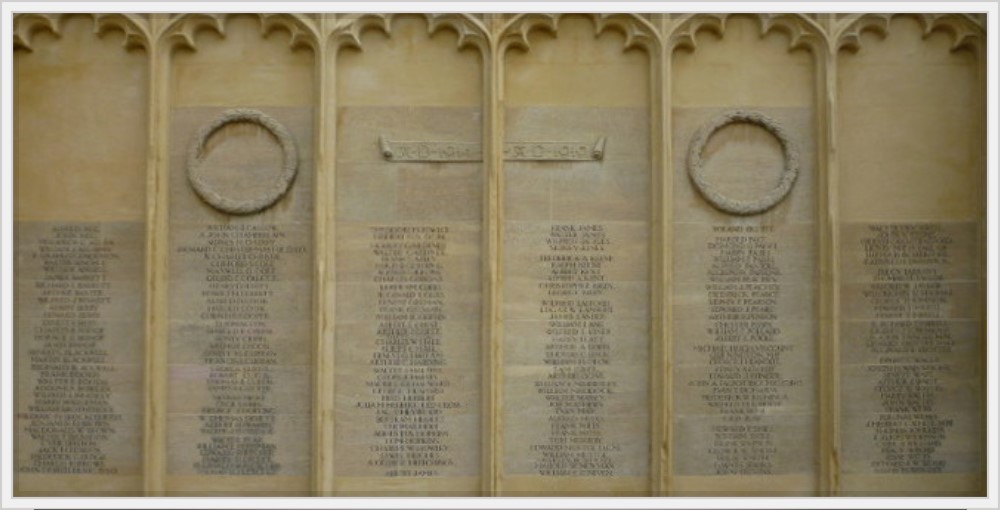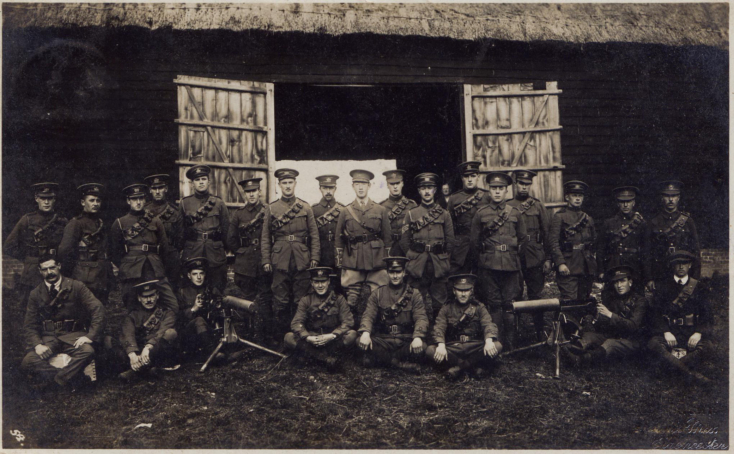
Cirencester War Memorials
This project got started when it was realised that not only are there two main memorial lists, but that they differ.
Background
On 31st October 1918 the War Memorial Cross beneath the tower of Cirencester Parish Church was dedicated to
“…. The men of Cirencester who have given their lives for their King and Country in the Great War, 1914-18”
It was intended to inscribe their names on panels on the West of the South Porch conce the war was ended. In December 1918 a preliminary list was published of
“all who have fallen in the war who are known to have been natives of Cirencester of who home was in Cirencester at the time they joined up” …. Together with “…. a few relatives or close personal friends of the donors,”
Mr Thomas and Hon. Mrs Kingscote of Watermoor House who had funded thew memorial

It is believed that the qualifying area would have been that of the “Urban District Council”, which differs from the present Town Council Area.
In July 1919 a public appeal was made for a further memorial in the form of extension to Cirencester Hospital then in Sheep Street. The roll of honour on this building – now the Cirencester Memorial Centre – was prepared in 1921 to list
“ all Cirencester men and women who fell in the war or died from the effects of wounds received or illness contracted on active service, the qualifications adopted being 1) birth in the Parish of Cirencester 2) enrolment whilst resident in Cirencester”.
So broadly speaking some men are named on the church panels who did not qualify for the later memorial, which includes some whose death occurred or became known after the inscription of the church panels.
Only one woman is named, Julia Herbert, who was a Red Cross worker. The lists (left) give name, date of death, if known, regiment or service, if known and which memorial panel the names are on. The date of death will help you search the Wilts and Gloucestershire Standard (to be found on microfilm in Cirencester’s Bingham Library for announcements, obituaries or letters. We have now extracted most World War 1 references from the WGStandard. If you find a newspaper article we have not included in the relevant biography. Do let us know.
You may find that relatives that you thought met the criteria above are not listed. We would like to know this too. There is much correspondence about Henry Day, for example, who died of wounds in 1915 who had links to many places near here but not, it seems in Cirencester itself. He cannot be found we think on any memorial in the county. His grave is in Sussex.
